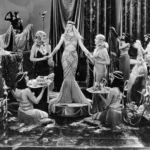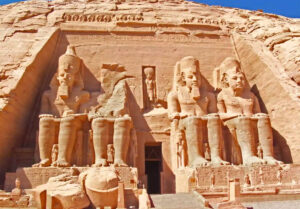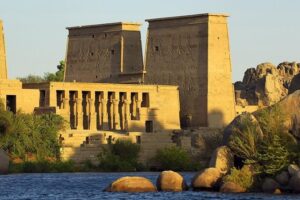Ancient Echoes: Egyptian Motifs in Art and Design
Ancient Egyptian art has a timeless appeal. Its distinctive motifs, or recurring designs and symbols, have transcended millennia. They continue to inspire artists, architects, and designers today. The use of Egyptian motifs in art demonstrates a lasting fascination with this ancient civilization. It is a legacy of its unique aesthetic, powerful symbolism, and monumental scale.
The Foundation of Egyptian Art
Ancient Egyptian art was highly stylized and symbolic. Artists followed strict rules, known as canons of proportion. These rules dictated how they depicted the human form. For example, they showed figures in a composite view: the head in profile, the eye and shoulders frontally, and the legs in profile. This style gave art a sense of order and eternity. Key themes like the afterlife, divine kingship, and cosmic balance shaped the motifs they created.
Iconic Egyptian Motifs
Certain motifs are instantly recognizable as Egyptian. They are found in hieroglyphs, tomb paintings, and monumental art. The Ankh is the most famous Egyptian symbol. This cross with a loop at the top represents life and eternal life. Its simple yet powerful form has made it a popular motif in jewelry and modern design. The Scarab beetle is another key motif. It symbolized creation, rebirth, and the sun god. Artists often used the scarab in amulets and decorative objects, believing it brought good luck and protection.
The Eye of Horus is a powerful symbol of protection and good health. It represents the mythical eye of the god Horus. Egyptians used this motif extensively on amulets, jewelry, and paintings. Its stylized design remains a popular motif in modern tattooing and graphic design. The Lotus and Papyrus plants were symbolic motifs. The lotus represented rebirth and creation. The papyrus symbolized Lower Egypt and the fertile Nile Delta. When shown together, they symbolized a unified Egypt. These motifs frequently appeared on temple columns and tomb walls. They are often seen in architectural details and decorative arts today.
In Western Art History
The influence of Egyptian art has appeared in different historical periods, particularly in the West. This recurring trend is known as “Egyptomania.” Greeks and Romans were among the first to adopt Egyptian motifs. Greek artists took inspiration from Egyptian sculpture. They imitated the rigid poses and symmetrical forms. The Romans also showed a great fascination with Egypt. They transported obelisks to Rome and incorporated Egyptian elements into their temple designs. Roman mosaics and frescoes often featured scenes from the Nile.
During the late 18th and early 19th centuries, Europe experienced a major revival of interest in classical antiquity. Napoleon’s expedition to Egypt fueled this fascination. This led to a wave of Egyptian motifs appearing in European art and furniture. Designers used sphinxes, pyramids, and hieroglyphs in everything from chairs to clocks. The discovery of Tutankhamun’s tomb in 1922 sparked another wave of Egyptomania. This fascination was particularly strong in the Art Deco movement. Designers used bold geometric shapes, stylized sunbursts, and zigzag patterns. These patterns reflected the linear, stylized forms of ancient Egyptian art. The famous Chrysler Building in New York, with its pyramid-like spire, shows a clear Egyptian influence.
The Legacy in Contemporary Art and Design
Today, Egyptian motifs continue to appear in various forms. They are a powerful source of inspiration. Modern architects use pyramid shapes, obelisks, and lotus columns in their designs. They evoke a sense of grandeur and timelessness. Designers often incorporate the ankh, scarab, and Eye of Horus into their fashion and jewelry collections. These motifs add a touch of ancient mystique. Egyptian imagery is everywhere in pop culture. It appears in movies, video games, and graphic novels. It is a universal shorthand for ancient wisdom, power, and mystery.
The legacy of ancient Egypt’s artistic motifs is profound. They are a timeless link to one of the world’s great civilizations. These symbols have inspired countless artists across different cultures and eras. They show us how art can transcend time, carrying meaning and beauty for millennia. The Egyptian motifs we see today are a vibrant reminder of a civilization that never truly left us.











